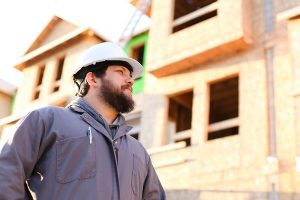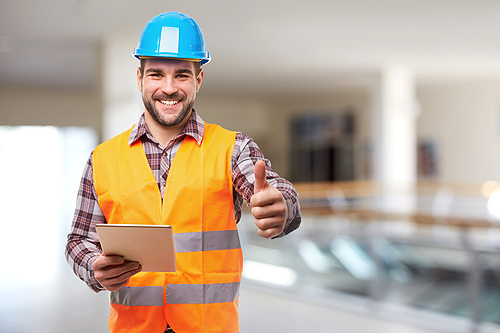Safety should be a top priority for any residential construction company that wants to protect its workers, do the right thing, and avoid civil liability. From keeping subcontractors safe through signage to making sure visiting homeowners stay out of harm’s way, here’s how to mitigate the risk of accidents on your jobsites.
Run Electrical Cords Alongside the Building
Whenever possible, run your extension cords against the building. This will keep them from getting stomped on, tripped over, or trapped beneath the next material delivery. It can also help protect the safety of visiting homeowners, who aren’t accustomed to having to watch where they step.
Establish Rules About Phones
Construction sites are not good places to let the mind wander. On a construction site, distractions can lead to serious injuries or even death. To keep your workers safe around heavy machinery or dangerous tools, make sure they keep their phones in their vehicles or inside pockets with the ringers off.
Get the Right PPE
Construction Personal Protective Equipment (PPE) is essential to safeguarding your crew and protecting your company from liability. The Occupational Safety and Health Administration (OSHA) has specific guidelines for PPE to prevent injuries to the eyes, ears, face, head, feet, and hands. Be sure to equip your team with effective PPE and make sure they actually wear it. You should also take steps to add effective fall protection equipment if your workers will be working up high.
You Build it, We'll back you up.
Learn why so many builders enroll their homes in the 2-10 New Home Warranty Program.
Know the Most Common Pitfalls
Residential builders are always under pressure to meet building deadlines without going over budget. This can cause them to cut corners or overlook important safety standards. When this occurs, they increase the risk of accidents and leave themselves exposed to civil and even criminal liability.
To make sure your team and company are well-protected, you should familiarize yourself with OSHA’s top ten most frequently cited jobsite violations. This will help you identify where you should focus the majority of your attention when shoring up potential safety issues.
Train Your Team
Fall protection training should be a huge priority for your crew. OSHA reports that falls are the leading cause of death on jobsites. They also result in costly injuries and lawsuits, which can bankrupt a construction business owner.
In addition to fulfilling OSHA’s strict training requirements, employers are required to properly implement fall-protection strategies on every worksite. They are also legally required to either confirm in writing that a worker has completed fall-protection training or retrain the employee when necessary.
Protect Visitors
You and your team may know your worksite like the back of your hand. However, it’s a foreign setting to visiting clients, homeowners, and subcontractors. Be sure to prepare guests so they will know how to stay safe.
Spend some time discussing safety policies for the job site before guests ever set foot on it. In addition to preparing the visitors, you should also prepare the landscape by adding warning signs and removing any and all hazardous items. Finally, make sure all visitors are equipped with appropriate PPE to protect their safety and safeguard your company from any liability.

Let 2-10 HBW Help You Succeed
Safety is crucial to your success, just like protecting your profits, promoting your quality, and planning for a successful future by controlling what’s behind you. That’s why 1 in 5 new homes in the US is covered by a structural warranty administered by 2-10 Home Buyers Warranty (2-10 HBW). As you mitigate risks on the jobsite, let a 2-10 HBW Structural Warranty help you manage risk from ground breaking through post-closing.








